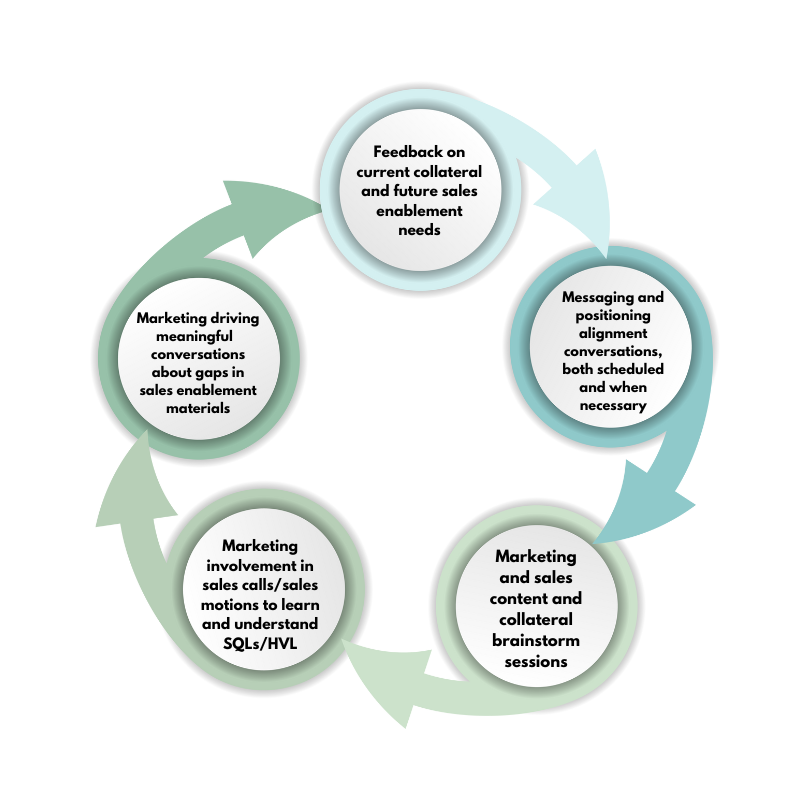Marketing and sales need to be an aligned team, with constant communication and feedback. This isn’t a new statement for us to make (read more about our love of sales and marketing teams being combined as the RDT aka Revenue Driving Team), but we can’t stop talking about it because so many organizations still aren’t getting it right.
There needs to be a focus on a creating and nurturing a feedback loop that looks something like this:

Aligning these two teams and ensuring their feedback and collaboration happens with the least amount of friction is the smartest move you can make in 2024.
So why do marketing and sales teams need to be spending time having conversations about, well, sales and marketing motions?
It’s crucial for marketing and sales leaders to be aligned and in constant communication inside an organization for several reasons:
Consistent Messaging: When marketing and sales teams are aligned, they can ensure that messaging and branding remain consistent across all customer touch points. This consistency helps build trust and credibility with potential customers and enhances the overall brand experience. Keeping marketing and sales aligned means that sales has a constant pulse on the way the organization is represented and what kind of messaging
Efficient Lead Management: Alignment between marketing and sales ensures that leads generated by marketing efforts are effectively handed over to the sales team. This alignment streamlines the lead management process, reduces the risk of leads falling through the cracks, and increases the likelihood of converting leads into customers. It also allows marketing to understand what sales considers both an SQL and a HVL (high-value lead).
Shared Goals and Objectives: When marketing and sales leaders are aligned, they can establish shared goals and objectives that drive the success of the organization as a whole. This alignment fosters a sense of collaboration and teamwork, encouraging both teams to work towards common objectives rather than pursuing separate agendas. Buy-in from both sides is a great way to get continuous support from these teams.
Data-Driven Decision Making: Alignment enables marketing and sales teams to share valuable data and insights about customer behavior, market trends, and campaign performance. By leveraging data-driven insights, both teams can make informed decisions about targeting, messaging, and resource allocation, leading to more effective marketing campaigns and sales strategies.
Improved Customer Experience: A seamless transition from marketing to sales ensures a smooth and cohesive customer experience. When marketing and sales teams are aligned, they can better understand customer needs, preferences, and pain points, allowing them to tailor their messaging and offerings accordingly, ultimately leading to higher customer satisfaction and retention. When sales and marketing are aligned, messaging and branding remain consistent across all customer touch points, leading to a unified customer experience.
Maximized ROI: Alignment between marketing and sales teams ultimately leads to maximized return on investment (ROI) for the organization. By working together towards common goals, optimizing processes, and leveraging each other’s strengths, marketing and sales leaders can drive revenue growth, increase market share, and ultimately achieve greater success in the marketplace.
Marketing and sales teams need to be closely integrated and communicating constantly in order to really maximize efforts of both teams. A more integrated Revenue Driving Team means better and more consistent messaging, faster and more efficient lead management, shared and common goals and objectives, smarter decisions (driven by data), and an overall better customer experience.
Sharp business leaders know that an integrated and cohesive marketing and sales team that feels enabled and encouraged to collaborate means big and impactful revenue gains in 2024!
